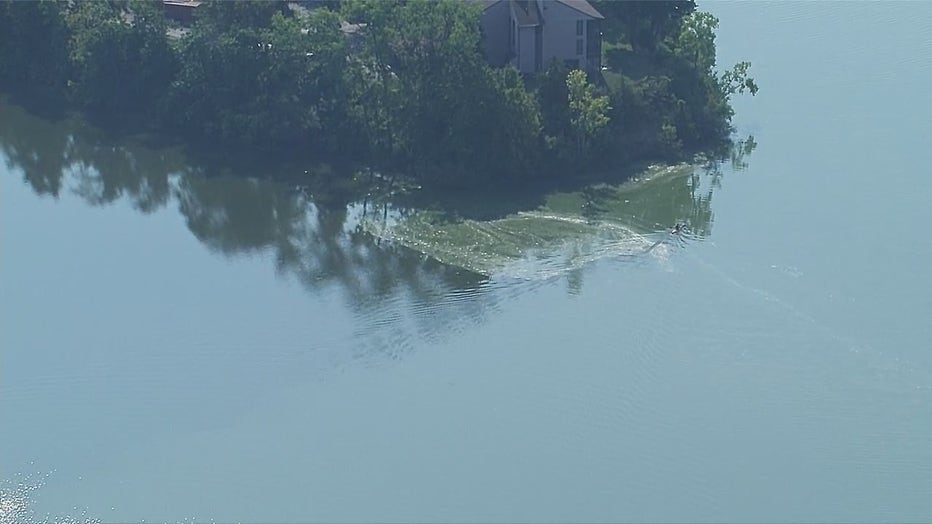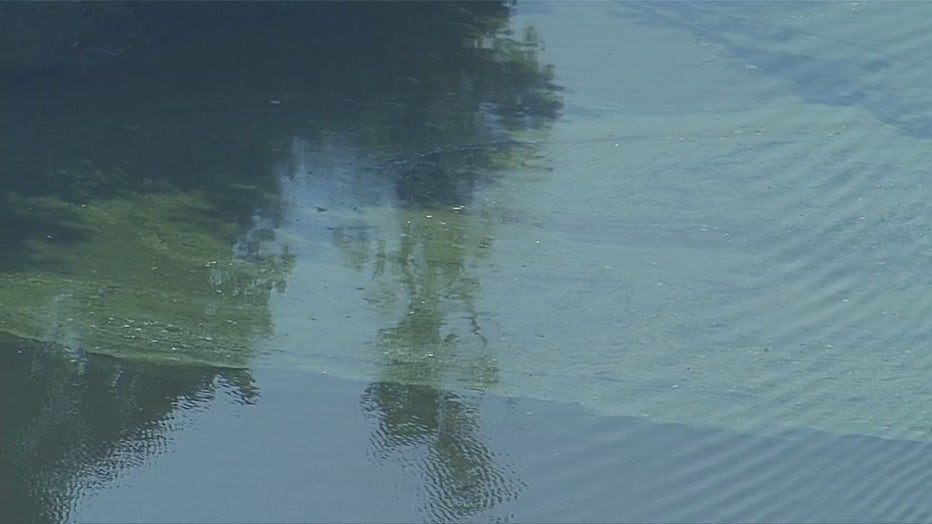Do not eat advisory: Washtenaw County warns of conditions at lake
Ford Lake in Washtenaw County. Photo: Amber Eikenberry/FOX 2
YPSILANTI, Mich. (FOX 2) - The Washtenaw County Health Department is warning people to stay away from the surface of a lake in Ypsilanti due to harmful algal blooms - and not any fish that are caught in the lake.
The public health advisory was issued for Ford Lake in Ypsilanti after a resident reported a suspected harmful algal bloom (HAB) on Tuesday, Sept. 10. That same day, the health department went to the lake to test and confirmed the presence of levels above the Environmental Protection Agency (EPA) recommended recreational limit.
According to the Health Department, Ford Lake has had periodic harmful algal blooms in the past. In 2020, a similar advisory was issued in August due to similar looking water.
The advisory will remain in place for any areas with blue-green water or water with a green sheen to it.

This advisory does not mean the lake is closed. You can still swim and play at the lake – but people and pets should avoid direct contact with scums on the lake, water that is blue-green, or water that looks like it has ‘spilled paint’ on its surface. People and pets should also not drink the lake water.
Hunters beware: Don't eat venison taken from this northern Michigan marsh
Additionally, the health department says all fish caught in the lake should be released and not eaten.
If you or your pet get sick after going in the water, call your doctor or veterinarian.
Also, the air around the algal blooms can carry droplets – which can be breathed in by people who are boating, tubing, or water skiing.

What symptoms do harmful algal blooms cause?
People who breathe in water droplets from boat spray can have symptoms that include nose and throat irritation.
Swallowing large amounts of water while swimming, wading, or playing in the water may cause flu-like symptoms, gastrointestinal illness, or neurotoxic symptoms. These may include abdominal pain, vomiting, diarrhea, weakness, numbness, headaches, dizziness, or difficulty breathing.
Swallowing large amounts of cyanotoxins can harm the liver or kidneys.
How do harmful algal blooms form?
HABs grow due to a variety of factors – including sunlight, low-water or low-flow conditions, calm water, warmer temperatures, and excess nutrients like phosphorus or nitrogen.
The primary sources of nutrient pollution are runoff of fertilizers, animal manure, sewage treatment plant discharges, storm water runoff, car and power plant emissions, and failing septic tanks.
What makes an algal bloom harmful?
Algal blooms are naturally occurring on lakes and rivers and most are not harmful.
However, some, like the one found at Ford Lake, can carry cyanobacteria that have the ability to produce toxins – which causes the HABs.
Report HABs by calling the Environmental Assistance Center at 1-800-662-9278 or sending an e-mail to AlgaeBloom@Michigan.gov.

